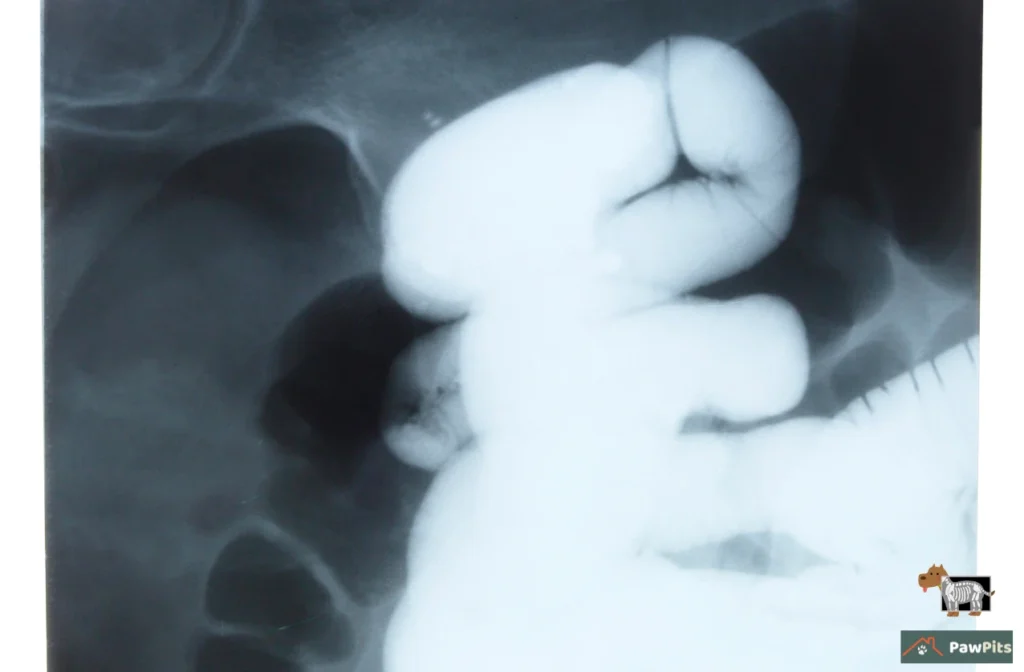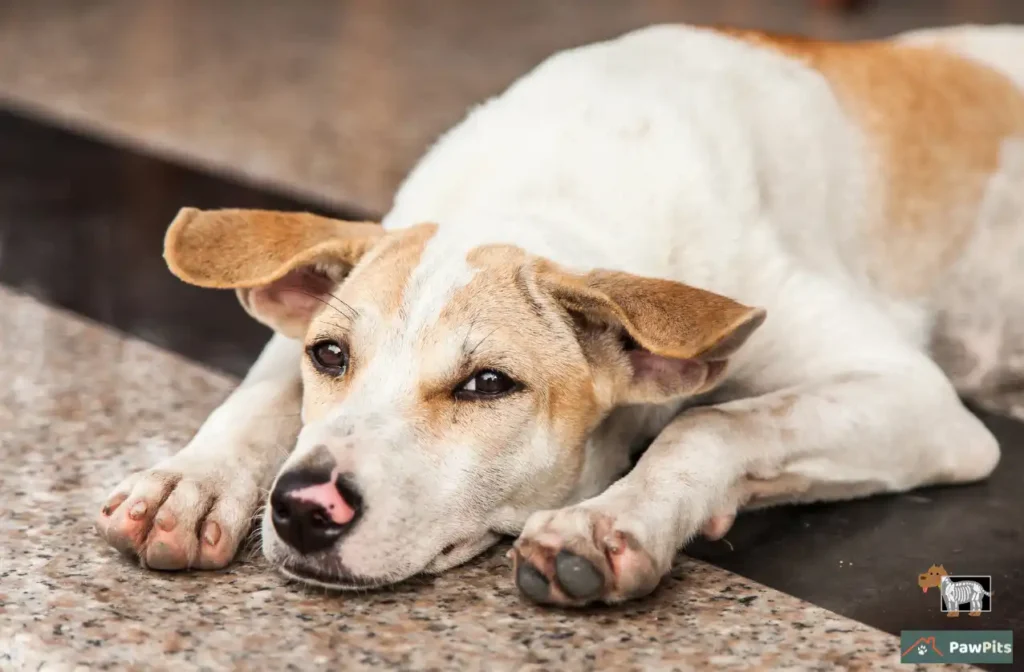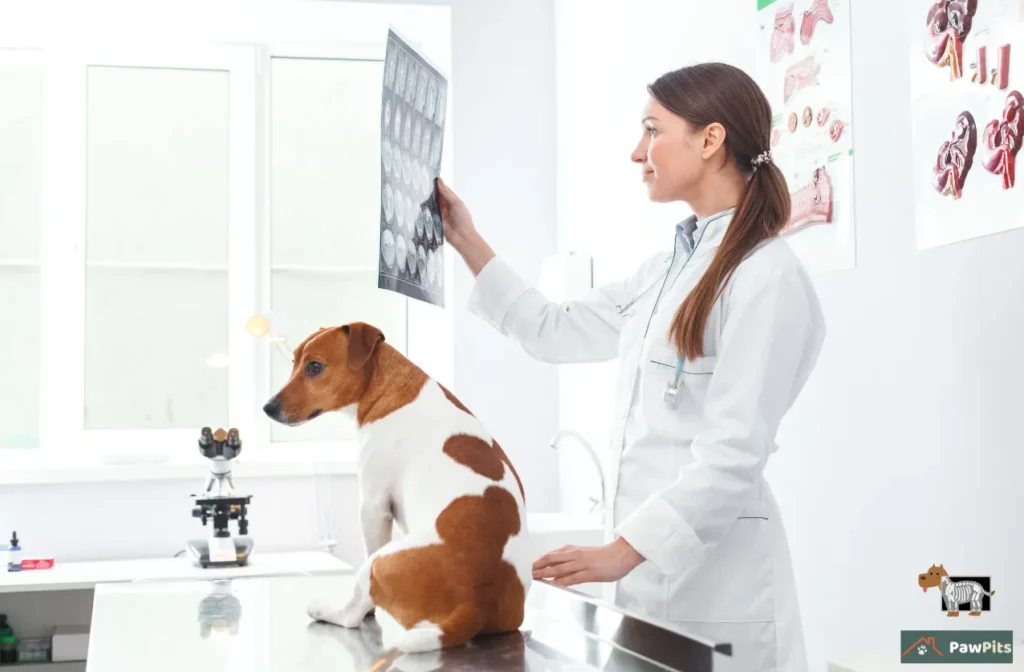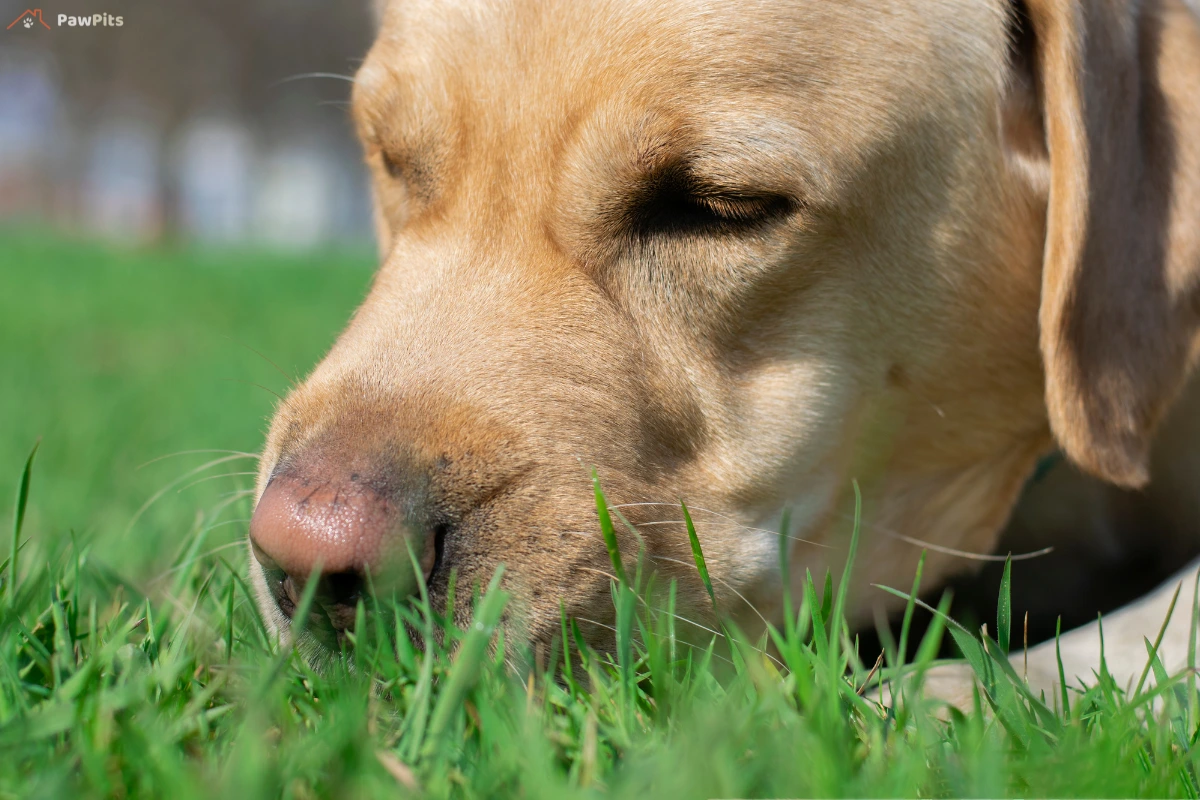When Worry Turns Into Panic
I didn’t think much of it when my dog stole a sock. Honestly, I laughed, because, well, dogs are weird like that. But later that night, she just… wasn’t herself. Wouldn’t eat, kept shifting like she couldn’t get comfortable. And here’s the part I hate admitting: I told myself it was probably nothing. Maybe she was tired. Maybe she just didn’t like her dinner.
Turns out, it was something. A dog intestinal blockage. And if you’ve never had a vet look you in the eye and say, “We need to act now,” trust me, you don’t want to.
The thing about blockages is they don’t announce themselves with flashing lights. The first 12 hours? You might think it’s just indigestion. By the second day, it can already be life-threatening. And that gap, that little window where you could have acted but didn’t, that’s what keeps a lot of dog owners up at night.
So this article isn’t just medical jargon or a lecture. It’s the stuff I wish someone had put in front of me: what a blockage actually is, how it unfolds over time, the seven big warning signs, and what you should (and shouldn’t) do the second your gut says something’s wrong. Because if you catch it early, you can save yourself a lot of guilt… and maybe save your dog’s life.
What Is a Dog Intestinal Blockage?

Okay, so here’s the thing: when vets say “intestinal obstruction,” it sounds clinical and kind of distant, right? But what it really means is, your dog swallowed something that’s now jammed in their digestive system, and nothing’s moving past it. Imagine flushing your toilet when a toy car’s wedged in the pipe. Same energy.
It’s usually something dumb (and I say that lovingly, because dogs are pros at eating dumb stuff). Socks, bones, rocks, peach pits, basically anything that fits in their mouth is fair game. Sometimes it’s a full stop, other times it’s partial, where a little food or water sneaks by. And that’s the dangerous part, you think they’re fine because they still nibble or drink, then boom, the blockage shifts and everything grinds to a halt.
Here’s where it gets ugly: the longer that “clog” sits there, the more pressure builds up in the intestines. Blood flow slows. Tissue literally starts to die. If the gut wall tears? Bacteria spill out, and suddenly you’re dealing with a life-or-death infection. Not trying to scare you… actually, scratch that, yes I am trying to scare you, because waiting it out is how dogs don’t make it.
The Usual Suspects (Stuff That Gets Stuck)
- Socks (yep, always socks)
- Kids’ toys, bits of plastic, hair ties
- Cooked bones, corn cobs, peach pits
- Rocks, mulch, sticks, rawhide chews
Can a dog just “pass it on their own”?
Eh… maybe. Tiny things sometimes slide through. But here’s the problem: you can’t tell which “harmless” thing will turn deadly. Hoping it passes is like hoping your clogged sink magically fixes itself, it might, but usually you end up calling the plumber. Except in this case, the “plumber” is an emergency vet, and the stakes are way higher.
Causes: What Dogs Swallow & Why They Do It
If you’ve ever caught your dog with something ridiculous hanging out of their mouth, you’ve probably asked yourself the same question every dog owner does: Why on earth would you eat THAT? Honestly, I don’t think even dogs know half the time. But there are patterns, and once you see them, it makes a weird kind of sense.
The “Chewers”
Some dogs are born shredders. Give them a toy, and five minutes later it’s snowing fluff all over the living room. The problem? They don’t stop at shredding. Tiny plastic bits, squeakers, string, they go down the hatch before you can blink.
The “Scavengers”
Other dogs act like the floor is an all-you-can-eat buffet. Kitchen scraps, baby socks, paper towels, if it smells like anything, it’s food. These are the ones who’ll nose through the trash or gulp down a corn cob like it’s steak.
The “Anxious Eaters”
This one’s sneakier. Some dogs chew or swallow weird things because they’re stressed or bored. Ever notice your pup gnawing on a blanket corner when you leave? That’s not just bad manners, it can end up being a vet visit.
Common Culprits (a non-exhaustive, but painfully real list)
- Socks, underwear, dish towels (basically your laundry)
- Bones (especially cooked ones, they splinter and lodge)
- Toys with squeakers or stuffing
- Rocks, sticks, mulch
- Fruits with pits (peaches, avocados, cherries)
- Rawhide chews (these swell up inside the gut)
And yeah, sometimes it’s just… random. A rubber band. A hair clip. A Lego. Dogs have zero sense of what their bodies can’t handle, which is why we end up doing damage control.
Why do dogs eat non-food items?
It’s a mix of curiosity, instinct, and sometimes a condition called pica (basically, craving non-food things). Puppies are the worst offenders because they explore with their mouths. Older dogs usually know better, but “know better” doesn’t mean “won’t do it.”
Timeline: How Dog Intestinal Blockage Symptoms Progress

The scariest part of a dog intestinal blockage is how fast things go from “meh, probably nothing” to full-blown emergency. To make it real, let’s walk through what usually happens over the first couple of days.
0–12 Hours: The Subtle Stage
At first, it doesn’t look dramatic. Your dog might skip a meal, pace a little, or vomit once. Easy to shrug off, right? Honestly, this is when most of us tell ourselves it’s just “a little stomach bug.” But deep down, something’s already stuck, and pressure is starting to build.
12–24 Hours: The Red Flags Start Popping
Now it’s harder to ignore. Vomiting becomes more frequent, sometimes with foam or bile. They might strain to poop but nothing comes out. The belly can feel tight, almost drum-like, and they start acting restless, or the opposite, totally lethargic. This is the point where your gut usually whispers, something’s not right.
24–48 Hours: Things Get Dangerous
By day two, the blockage isn’t just “uncomfortable.” It’s cutting off blood flow. Pain ramps up. Your dog may cry out when you touch their stomach. Dehydration sets in fast because nothing’s moving through. Without vet care, tissues in the gut can start to die. This is the line where survival odds start dropping sharply.
48+ Hours: Critical Emergency
After two days, it’s life-or-death territory. The intestinal wall can rupture, spilling bacteria into the abdomen. Dogs collapse from shock, infection, or organ failure. At this stage, surgery is often the only option, and not all dogs make it through.
How long can a dog live with a blockage?
Every dog is different, but most can’t survive more than 3–4 days with a full obstruction. Some deteriorate in less than 48 hours. That’s why vets say: don’t wait. If something feels off, act early. Better an unnecessary trip than a too-late one.
7 Warning Signs of a Dog Intestinal Blockage
Here’s the part I wish someone had spelled out for me. Because honestly, I used to wave half of these off, “oh, he just ate too fast” or “maybe she’s moody today.” Nope. These are the red flags that separate a random tummy ache from “get in the car right now.”
1. Vomiting… and Then Vomiting Again
One puke? Fine, dogs do that. Twice? You start side-eyeing them. But when it’s over and over, or worse, when they’re dry-heaving and nothing comes up, that’s when you know something’s blocking the system. It’s not just “bad kibble.”
2. Food? Nah, No Thanks
My lab would eat drywall if I let her, so when she refused dinner, I knew it was bad. Skipping one meal isn’t panic-worthy. Skipping everything, even treats or water? That’s your dog’s body slamming the brakes.
3. That Weird, Tight Belly
Ever pressed on your dog’s stomach and it feels almost like a drum? That’s not “full.” That’s pressure. And if they yelp or tense up when you touch them… yeah, that’s pain, not pickiness.
4. Squatting, But Nothing Happens
Looks like constipation, right? They squat, strain, maybe a tiny bit of diarrhea sneaks out. But really, it’s their body trying, and failing, to push past an obstruction. I misread this one for days. Don’t.
5. Can’t Get Comfortable (or Won’t Move At All)
This one threw me. Some dogs just flop down and won’t budge. Others pace like they’re on hot coals. Either way, it’s their way of saying “I hurt.” It’s subtle until it’s not.
6. Dehydration Kicks In
The gums go dry. Eyes start looking a little sunken. They lap water like crazy, or they drink and immediately throw it back up. Blockages suck the hydration right out of them, fast.
7. Collapse
This is the stage nobody wants to see. Gums go pale, breathing feels weird, and suddenly they’re just… down. If you ever see this, don’t Google, don’t wonder, don’t wait. Car. Vet. Now.
But what if my dog has diarrhea, doesn’t that mean it’s not a blockage?
I used to think so too. But no. Sometimes watery stool slips around the blockage, which makes you think, “Oh, at least things are moving.” Except they’re not. It can actually mean things are getting worse.
What To Do Immediately If You Suspect a Dog Intestinal Blockage

The moment your gut says, something’s wrong, you’re in a race against time. And I know the temptation, you Google remedies, you wonder if you should “wait it out.” I’ve been there. But honestly? That waiting game is what costs dogs their lives.
Step 1: Call Your Vet (Don’t Wait and See)
Even if you’re not 100% sure, call. Describe the symptoms, how long they’ve been going on, and anything your dog might have eaten. Most vets would rather you call “too early” than show up when it’s already critical.
Step 2: No Home “Fixes”
This is the hardest one. Don’t try to make them vomit unless a vet specifically says to. Don’t give mineral oil, bread, or random “internet cures.” Some things can make the blockage worse, or even rupture the gut.
Step 3: Keep Them Comfortable
If your vet says come in (and they probably will), get them ready for the trip. Don’t offer food or water until you’ve been advised, it can complicate surgery if that’s needed. Keep them calm, quiet, and gently restrict activity.
Step 4: Head to the Clinic or ER
I know the car ride feels endless, but every hour matters. Bring a sample of vomit or stool if you can, and note what objects might be missing at home (toys, socks, bones). That clue can save precious time during diagnosis.
Should I wait until morning if symptoms start at night?
Nope. Emergency vets exist for exactly this reason. Blockages don’t take a night off, and those lost hours could mean the difference between a simple procedure and a major surgery, or worse.
To learn the safe, vet-approved steps to clear a blockage once it’s detected, visit our new guide How to Clear Intestinal Blockage in Dogs
Diagnosis & Treatment: What Really Happens at the Vet
Walking into the clinic with that pit in your stomach? Yeah, I’ve been there. You hand your dog over, and suddenly you’re stuck in that awful limbo, half hoping it’s “just gas,” half terrified it’s not.
The First Look
The vet usually starts simple. Hands on the belly, a gentle press here and there. Sometimes they can feel the lump, like a hard knot that shouldn’t be there. Sometimes? Nothing obvious, which is maddening, because you know something’s wrong.
Pictures Don’t Lie (Mostly)
That’s when the X-rays or ultrasound come in. And let me tell you, waiting for those results feels like hours even if it’s ten minutes. On the screen, you’ll see shapes and shadows, sometimes clear (yep, that’s a sock), sometimes just gas bubbles that scream “blockage.” Bloodwork usually follows, not to find the object, but to check if dehydration or infection’s already setting in.
Treatment Paths
Here’s the fork in the road:
- If it’s still in the stomach? Sometimes they can make the dog vomit it up safely, or use a scope with a little grabber. Best-case scenario, honestly.
- If it’s in the intestines? That’s surgery territory. No sugarcoating. They open the gut, remove the object, and, if parts of the intestine are already damaged, they cut those out too. It’s major, but it saves lives.
- If it looks tiny and harmless? In rare cases, they’ll keep the dog on fluids and watch. But most vets lean on “better safe than sorry,” because waiting is risky.
The Aftermath
Recovery’s a spectrum. Sometimes it’s just a night on fluids and pain meds, then home with stern instructions to “watch like a hawk.” Other times, it’s days in the hospital, stitches, bland diets, weeks of careful rest. And yes, dogs usually bounce back faster than we do, but the stress (and bill) lingers for us humans.
How much does this all cost?
Brace yourself. Depending on where you are and how bad it is, it can run anywhere from a few hundred for a simple procedure to $5,000+ for surgery and recovery. Painful, yes, but losing your dog costs more in ways you can’t put a number on.
Prevention: How to Lower the Risk of Dog Intestinal Blockages
Here’s the tough truth, you’ll never stop your dog from trying to eat dumb things. It’s part of who they are. But you can stack the odds in your favor by making the risky stuff harder to get to, and by knowing your own dog’s habits.
Keep the “No-Gos” Out of Reach
- Laundry (socks, underwear, dish towels, aka the Holy Grail for chewers)
- Trash (bones, corn cobs, leftovers)
- Kids’ toys and small random objects (Legos, action figures, hair ties)
It sounds obvious, but you’d be shocked how often vets say, “yep, another sock.”
Choose Safer Chews & Toys
Not all dog toys are created equal. Skip rawhide (it swells in the gut) and flimsy plush toys with squeakers if your dog is a shredder. Go for sturdy rubber or puzzle toys that keep them busy without turning into confetti.
Supervise the “Problem Dogs”
Some dogs are chill. Others? They’re like toddlers with teeth. If you know yours is a scavenger or a chewer, supervision isn’t optional. Crates and gates aren’t mean, they’re lifesavers.
Train Away the Trash Raids
“Leave it” isn’t just a cute trick, it’s the command that can save you thousands of dollars. Practice it until it’s second nature.
Can diet help prevent blockages?
Sort of. A balanced, fiber-rich diet keeps digestion moving and lowers the urge to scavenge. But let’s be real, no diet in the world makes a dog stop chasing socks. Prevention is mostly about management.
For a deeper dive into how to spot digestive discomfort before it becomes an emergency, visit Dog Intestinal Blockage Symptoms: What to Watch For & What to Do
Owner Stories & Vet Insights
Sometimes facts don’t hit as hard as a story. Ask any vet, and they’ll have dozens of “blockage tales.” And ask any owner who’s been through it, and you’ll see the mix of guilt and relief in their eyes.
A Sock That Almost Won
One friend of mine swore her golden retriever just had a mild bug. A little vomiting, some lethargy, nothing new. By the time she caved and went to the vet, they pulled a whole sock out during surgery. The kicker? She recognized it as the one she lost from the laundry three days earlier. Her words: “Never again will I wait it out.”
The Vet’s Take
A local vet once told me: “We see these cases weekly. Nine times out of ten, the owners say, ‘I thought he’d pass it on his own.’ But waiting even 12 hours can be the difference between a simple removal and a ruptured intestine.” It stuck with me, because it sounded less like medical advice and more like a plea.
The Emotional Side
What doesn’t get talked about enough is the guilt. Owners blame themselves for not catching it sooner, for leaving socks out, for assuming it was “just an upset stomach.” Truth is, dogs are crafty, and no one can dog-proof a house completely. What matters is what you do once your gut tells you something’s wrong.
Should I feel guilty if my dog gets a blockage?
No. You should feel responsible to act, but not guilty. Dogs are pros at getting into trouble, it doesn’t mean you’re a bad owner. The real mistake is ignoring the signs once you see them.
When It’s Not a Blockage
Here’s the curveball: some of the classic blockage signs, vomiting, diarrhea, belly pain, can show up in other conditions too. And that’s part of what makes this so stressful as an owner. You’re stuck asking, “Is this something small… or something deadly?”
Common “Look-Alikes”
- Gastroenteritis (stomach flu): Causes vomiting/diarrhea, usually from bad food or bacteria.
- Pancreatitis: Can cause belly pain, vomiting, refusal to eat, looks almost identical to blockage at first.
- Constipation: Straining without results, but without the same bloating or vomiting.
- Bloat (GDV): Different emergency, but some early signs overlap, tight stomach, restlessness, retching.
The Key Difference
The big giveaway with blockages is that things don’t improve. Gastroenteritis might ease up in 12–24 hours. Constipation often responds to fluids or mild changes. But a true obstruction only gets worse with time.
How can I tell at home if it’s “just a stomach bug”?
Honestly? You can’t, not with certainty. That’s the hard truth. The safest rule is this: if symptoms are sharp, worsening, or not improving within a day, treat it like a blockage until a vet proves otherwise.
Trust Your Gut, Protect Theirs
I’ll be honest, blockages don’t start out looking like emergencies. They sneak up on you. A skipped meal here, a weird squat there, maybe some puke on the carpet. And you tell yourself, dogs get stomach bugs all the time. I did. I think most owners do.
But here’s what I learned the hard way: waiting is the gamble that doesn’t pay off. These things don’t just “sort themselves out.” They get worse. Sometimes quietly, sometimes all at once. And when it tips over into an emergency, you don’t get a do-over.
Do I still leave socks on the floor sometimes? Yeah. Do I triple-check now before I shrug off a skipped meal? Absolutely. You don’t have to live paranoid, you just have to trust that nagging voice when something feels off.
Because here’s the truth: you know your dog better than anyone else ever will. Better than Google. Better than your neighbor. Sometimes even better than your vet in those first few minutes. If your gut says something’s wrong, listen. Even if it feels dramatic. Even if it’s a false alarm.
False alarms cost you an office visit. Ignoring the real thing? That can cost you your dog. And no “maybe it’ll pass” is worth that.


1 thought on “Dog Intestinal Blockage Timeline: 7 Warning Signs to Act Fast!”